[Download] Windows 10 Recovery Tool for 32 Bit and 64 Bit
PAGE CONTENT:
- Overview of Windows Recovery Tool
- What Windows 10 Recovery Tool Should I Use?
- How to Create Windows 10 Recovery USB with 2 built-in Tools
- How to Create Windows 10 Recovery USB with Third-party Software
- Conclusion and FAQs
Overview of Windows Recovery Tools
PC manufacturers used to include a CD/DVD with a system image, allowing users to easily restore their OS to factory settings. However, modern PCs often use a hidden partition on the main drive or a Windows recovery USB drive, which includes troubleshooting tools and can reinstall Windows, helping users in emergency situations when their system won't boot.
In Windows 10, various Windows recovery tools, such as System Restore, Startup Repair, and System Image Recovery, address different OS issues.
| Windows Recovery Tools (Options) | Solve What Kind of Problems |
|---|---|
| Reset your PC | Your PC isn't working well and it's been a while since you installed an app, driver, or update. |
| Windows recovery drive | Your PC won't start and you've created a recovery drive. |
| Windows installation media | If your PC won't start, you haven't created a recovery drive, and resetting your PC didn't work, you might need to perform a manual Windows installation or use a USB drive to install Windows from scratch. This involves downloading the Windows installation media, creating a bootable USB drive, and following the installation prompts to install Windows on your PC. |
What Windows 10 Recovery Tool Should I Use?
Windows 10 recovery tool helps create a recovery USB or CD/DVD disc, and it's recommended to make one before your PC dies. Microsoft and third-party software manufacturers offer reliable recovery tools, with the Windows 10 built-in tool and Qiling Backup being two of the best options for effectiveness and ease of use.
Pros of Qiling Backup:
- With Qiling Backup, users can make a full/differential/incremental backup.
- The backup image created by Qiling Backup can be stored on the network, locally, or in the cloud.
- The backup image created by TB is independent, unaffected by Windows updates, and will not be damaged.
You'll learn how to create a Windows 10 recovery USB using both the built-in tool and third-party software. This will allow you to recover from a non-bootable Windows OS issue and revert your system back to a working state.
How to Create a Windows 10 Recovery USB with 2 Built-in Tools
Applies to: Windows 10 32-bit and 64-bit operating system
Reference: Microsoft Official Support
Notice:
The recovery drive can help troubleshoot and fix PC problems, even if it won't start, and can also be used to reinstall Windows if system files were backed up to it. However, if system files weren't backed up, the recovery drive won't be available for Reset this PC and Recover.
#1. To create a Windows 10 recovery drive, follow the below steps:
Step 1. Insert the USB drive into your computer. In Windows 10 Control Panel, click "Recovery".
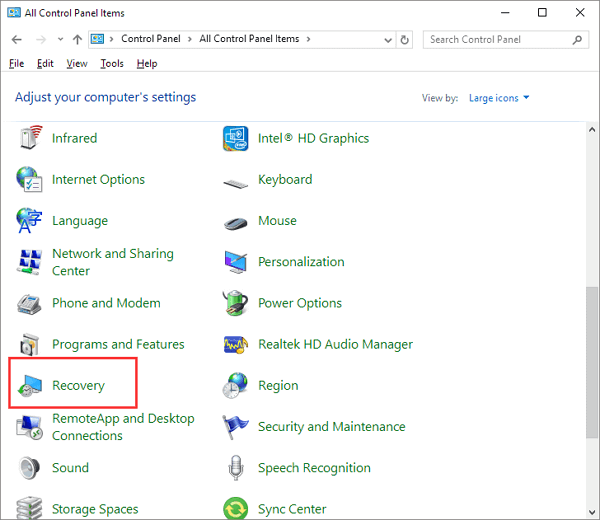
Step 2. You'll arrive at the Advanced recovery tools area, choose "Create a recovery drive".
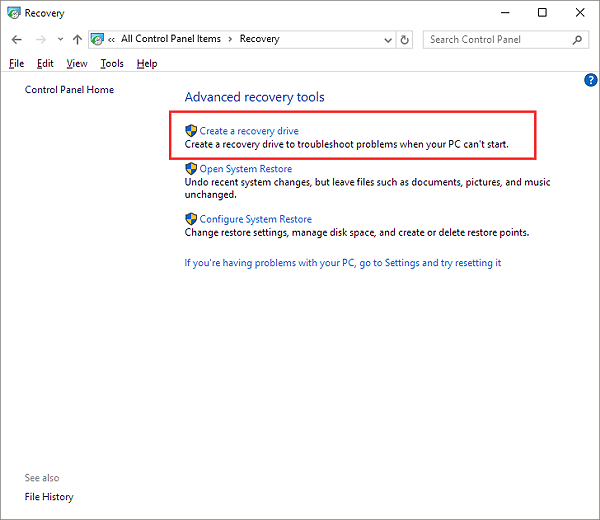
Step 3. The option "Back up system files to the recovery drive" should be ticked if you want to use the drive to reinstall Windows or restore a previous version of Windows, then click "Next".
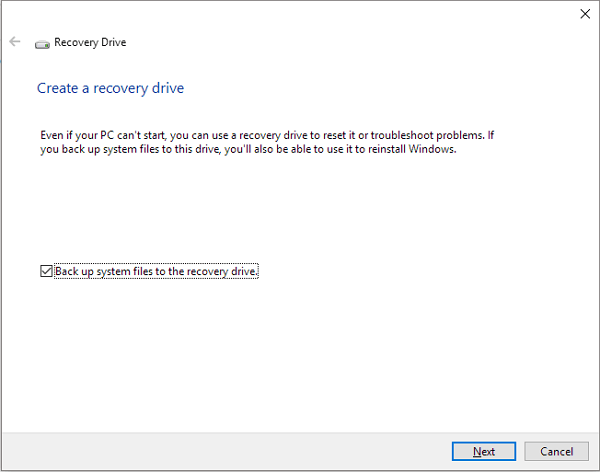
Step 4. Wait until the wizard prepares to copy files to your flash drive.
Step 5. Select your USB flash drive as the recovery drive and click Next.
Step 6. Confirm the warning message that everything on the drive will be deleted, including personal files, and make sure you've backed up any important files before clicking "Create".
Step 7. When the final message "The recovery drive is ready" appears, click "Finish".
To Recover Windows 10 Using the Windows 10 Recovery Drive:
Step 1. Connect the recovery drive and turn on your PC.
Step 2. Select "Troubleshoot" and choose one recovery option.
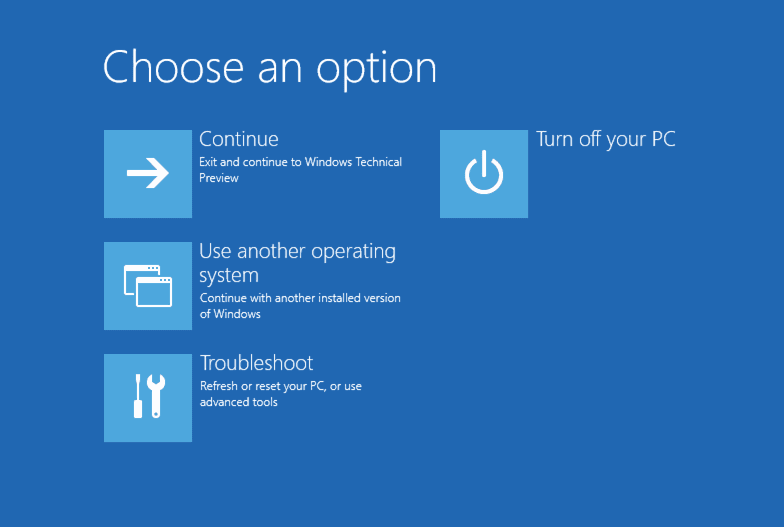
- To restore your PC from a system restore point, go to the "Advanced Options" and select "System Restore". This will remove recently installed apps, drivers, and updates, but won't affect your personal files. It's like taking the PC back to a previous point when it was working properly.
- Select the "Reset this PC" option and choose whether to keep or remove your files.
- Selecting "Recover from a drive" will reinstall Windows 10, removing personal files, apps, drivers, and settings changes, essentially restoring the computer to its original state.
#2. To create a Windows 10 installation media recovery tool, follow several steps:
Step 1. On a working PC, go to the Microsoft software download website.
Step 2. Download the Windows 10 media creation tool and then run it.
Step 3. Select Create installation media for another PC.
Step 4. Choose a language, edition, and architecture (64-bit or 32-bit).
Step 5. Follow the steps to create installation media, and then select Finish.
How to Create a Windows 10 Recovery USB with Third-party Software
To use Qiling Backup to create a Windows 10 recovery drive, download the Windows backup software on a working PC, then follow the step-by-step guide to create a bootable USB drive. Additionally, create a Windows 10 system backup image for future restoration to a working restore point.
The standard procedure of creating a third-party Windows 10 recovery drive involves using a third-party tool, such as EaseUS Todo Backup or AOMEI Backupper, to create a bootable USB drive that can be used to recover or reinstall Windows 10. This process typically involves downloading and installing the third-party software, launching it, and following the on-screen instructions to create a bootable USB drive.
- Create a bootable Qiling Backup USB drive
- Create a Windows 10 system image
- Boot from the recovery USB and perform a system recovery
Notice:
Create Emergency Disk is only for data & system restore when your PC can't start properly and is used to restore from a backup image, not for system repair.
To create a Windows 10 recovery USB with Qiling Backup:
Step 1. Prepare a USB drive which can be written and read.
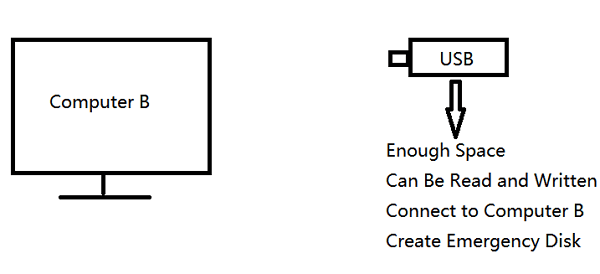
Step 2. Launch and install Qiling Backup on the Computer B
Step 3. Open the tool and click "Tools" > "Create bootable media".
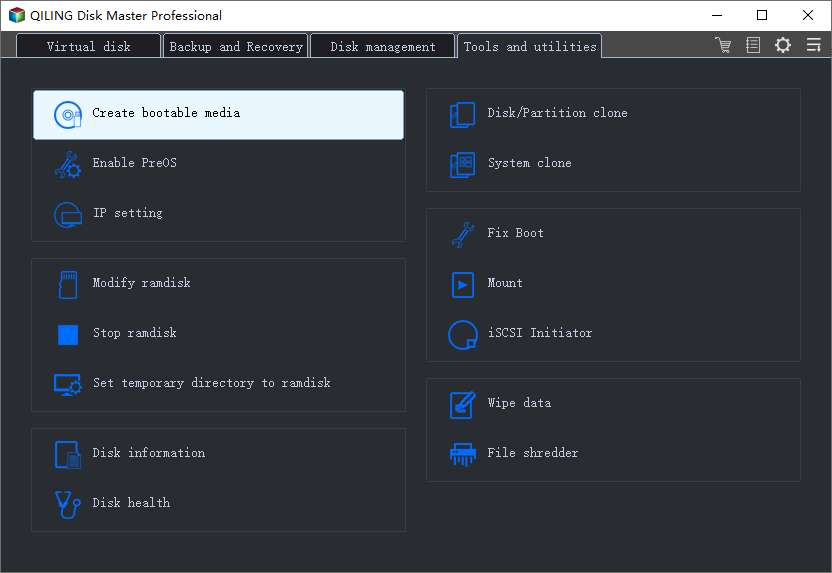
Step 4. Select a bootable media type: here we choose USB drive.
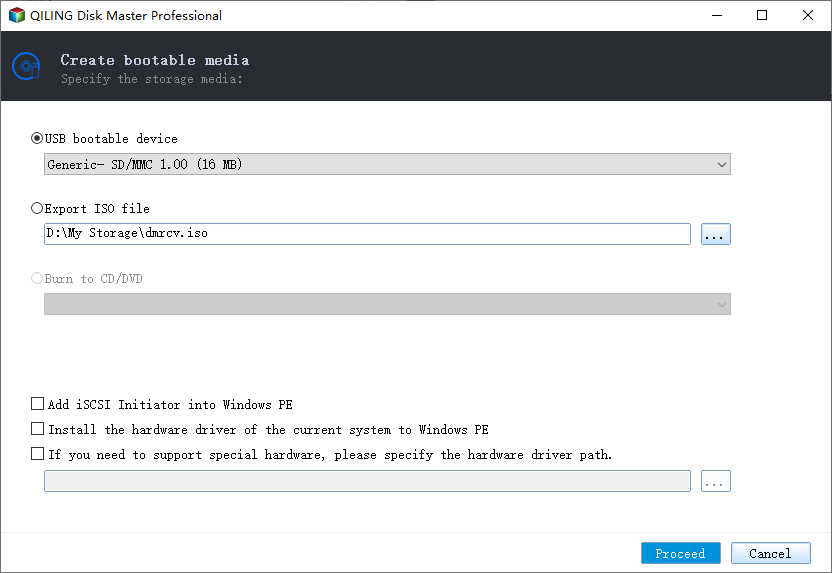
Step 5. Click "Proceed" to create a bootable disk.
After creating the Qiling Backup bootable USB recovery disk, go back to the main window of Qiling Backup and create a backup image according to your needs, such as a system backup or file backup.
To create a Windows 10 system image:
Step 1. To backup only Windows 10 on your computer, choose the "System backup" option on the "Backup and recovery" page.

Step 2. In the next window, you can customize your own Windows 10 backup by selecting a backup location, such as a hard drive, USB hard drive, network drive, or cloud drive, and adding a plan name and description.
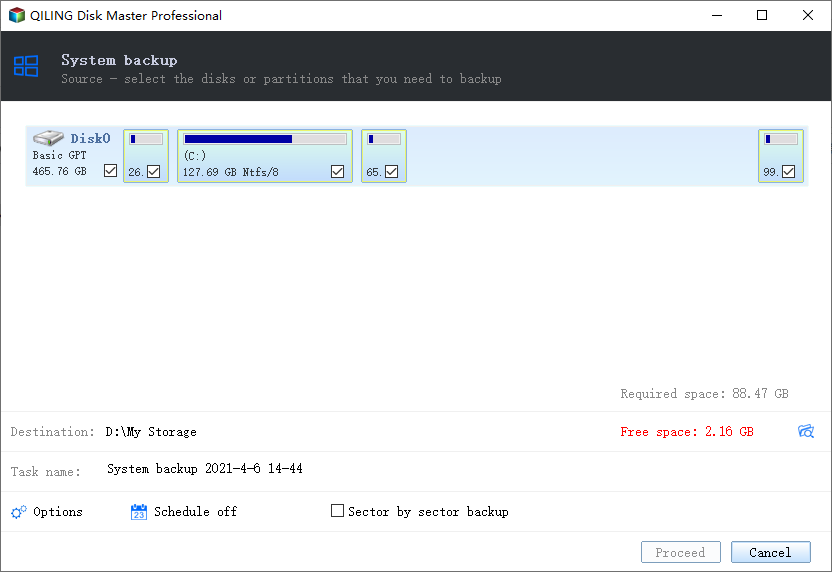
To avoid potential issues with the backup file, it's recommended to store it in a separate storage medium or drive, ensuring its safety and integrity.
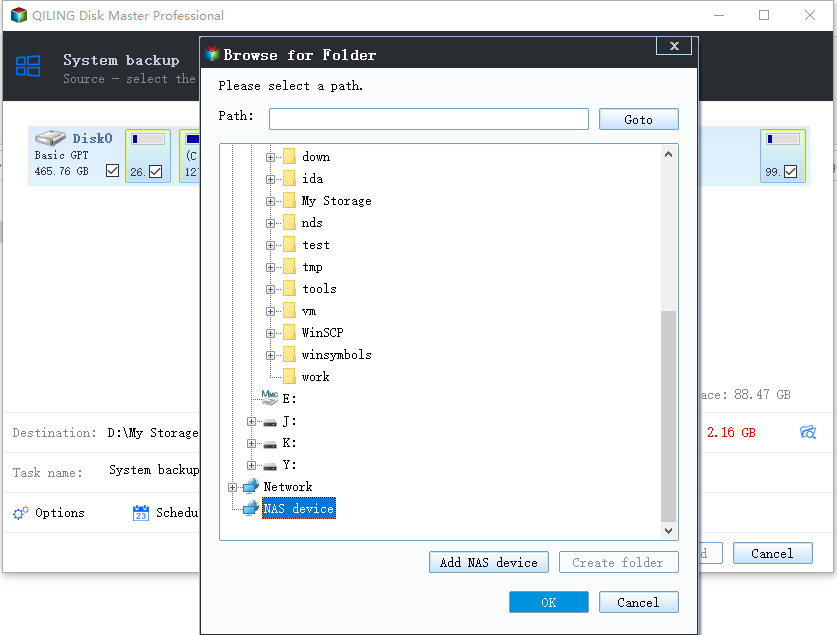
Enable automatic Windows 10 backup at a set time or upon an event, such as daily, monthly, system startup, shutdown, user logon, or log off.
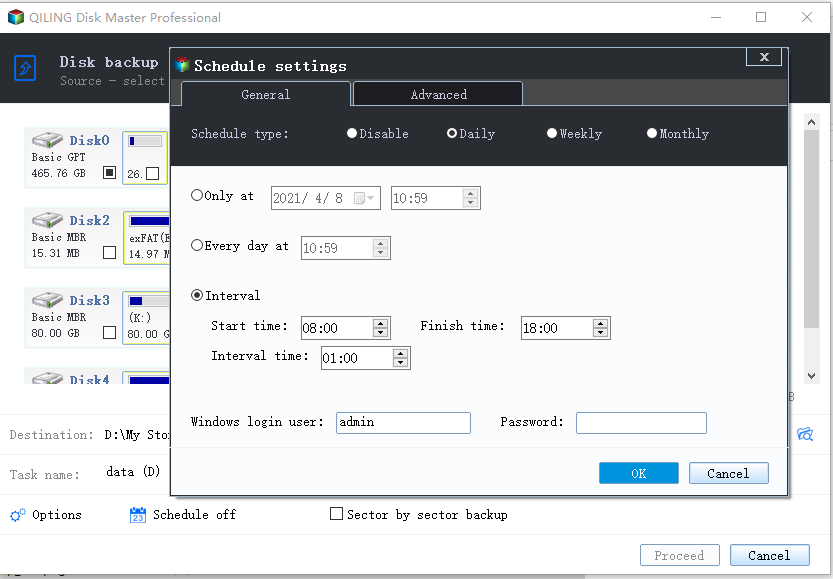
Step 3. Once all the basic settings were made, click "Proceed". This will initiate a full Windows 10 backup, which will protect your system from unexpected disasters. Wait for a while for the backup to complete.
To recover Windows 10 using the recovery drive:
Step 1. Connect the recovery drive and keep tapping "F2" while turning on your PC. Choose to boot from Qiling Backup.
Step 2. After accessing Qiling Backup, choose your system image or other backup images and click "Recovery".
Conclusions and FAQs About Windows Recovery Tools
Windows recovery tools are essential for when your operating system crashes, freezes, or gets stuck, and can be used to create a risk-free recovery USB drive or disk. With Windows 10 being the dominant operating system, it's helpful to know how to use the built-in recovery tools or third-party tools to troubleshoot and recover your system.
Moreover, there are some other frequently asked questions that might arouse your interest. Read on and get the answers.
1. Can I download a Windows 10 recovery disk?
To download Windows 10, go to the official download website (https://www.microsoft.com/en-us/software-download/windows10) and download the Windows media creation tool on Windows 10, 8.1, 8, or 7 computers.
2. How do I use Windows 10 recovery USB?
To use the recovery USB drive, simply change your computer's boot drive to the USB drive.
- Turn off the computer.
- Insert a recovery USB drive into a USB port on the computer, then turn on the computer.
- To select the USB drive, use the Down arrow key to scroll through the list of available drives and select the one you want to use. Then, press the Enter key to confirm your selection.
- Click the language for your keyboard.
- Click Troubleshoot.
3. Does Windows 10 have a repair tool?
To run a Windows 10 repair troubleshooter, select Start, then Settings, then Update & Security, and finally Troubleshoot. This will help solve problems with your PC.
Related Articles
- Windows 10 Backup and Restore - Full Solutions to Protect System, Data and Applications
- How to Copy/Move Recovery Partition to USB or Another Hard drive [2 Ways]
- COVID-19 Safely and Effectively Work from Home Backup and Recovery Plan
- How to Change Android SD Card to A Bigger One in Windows 10/8/7